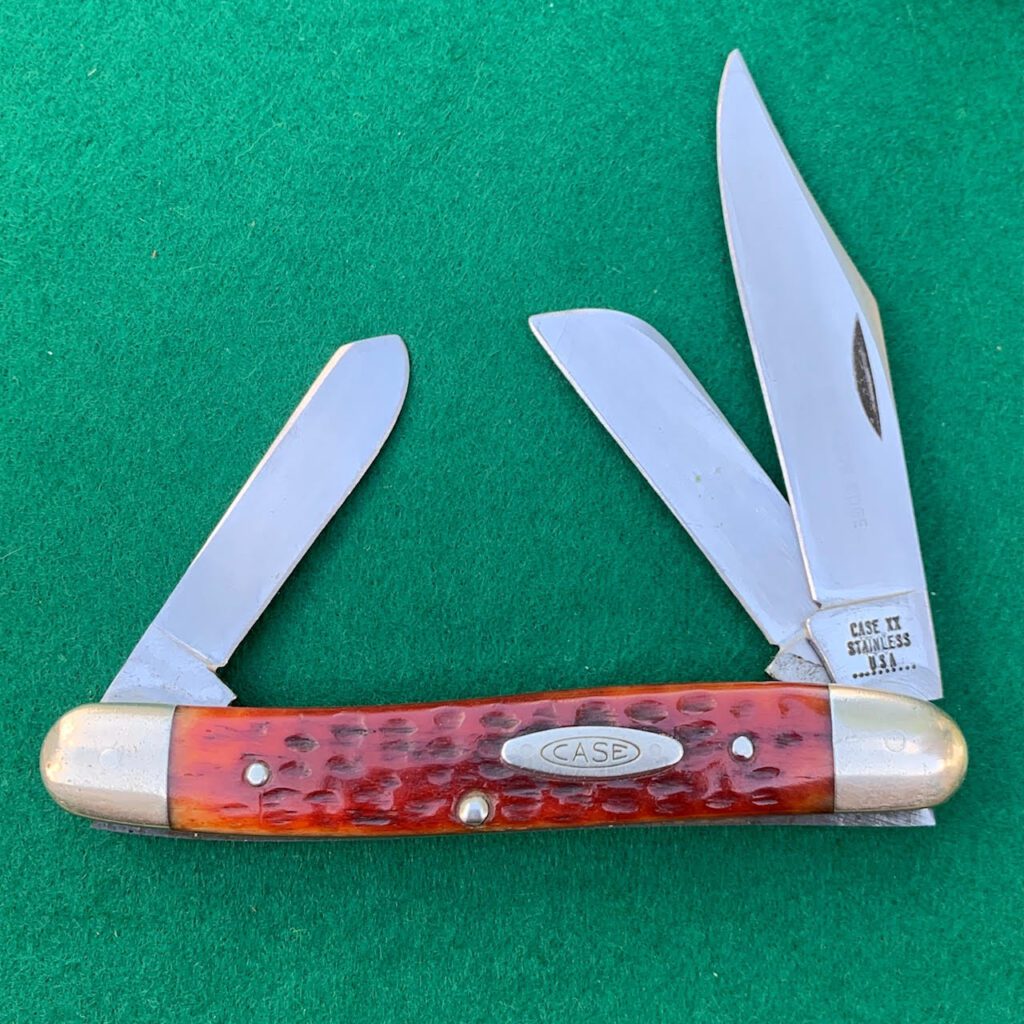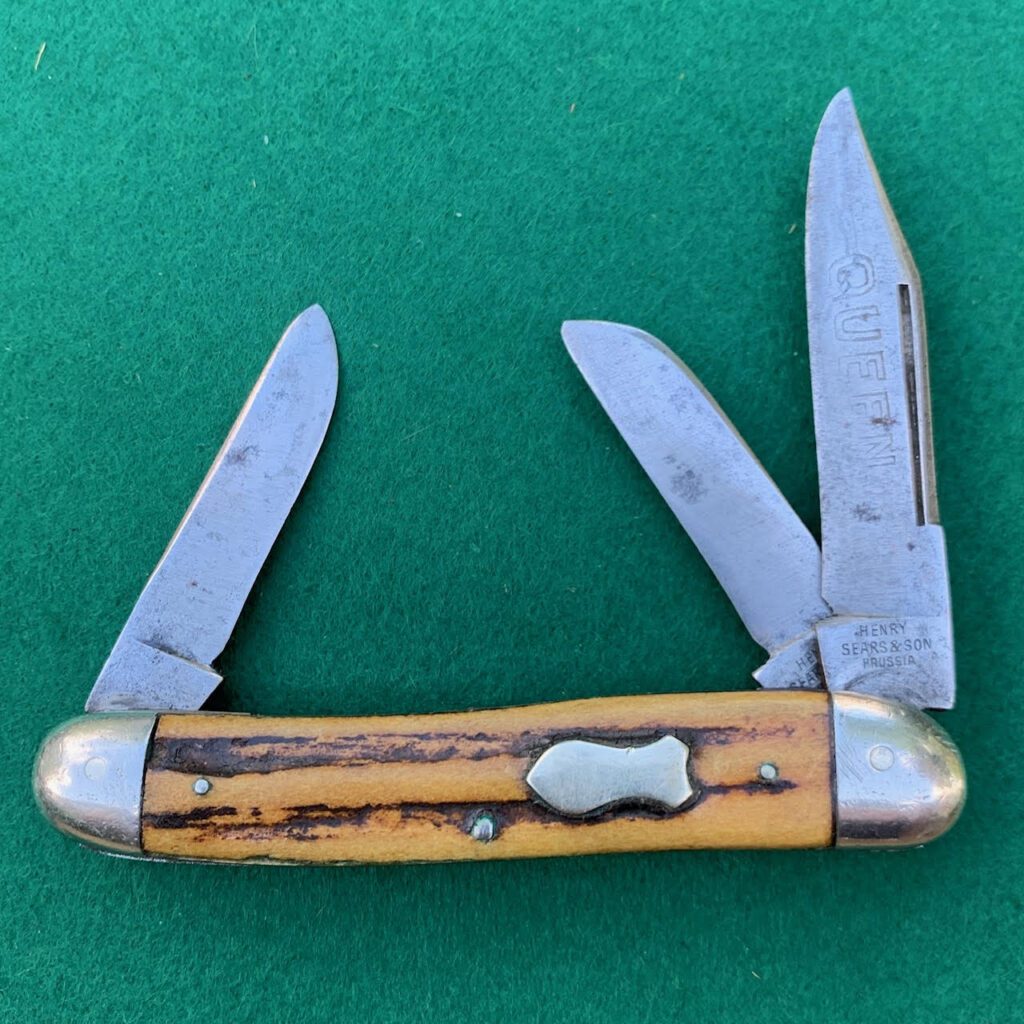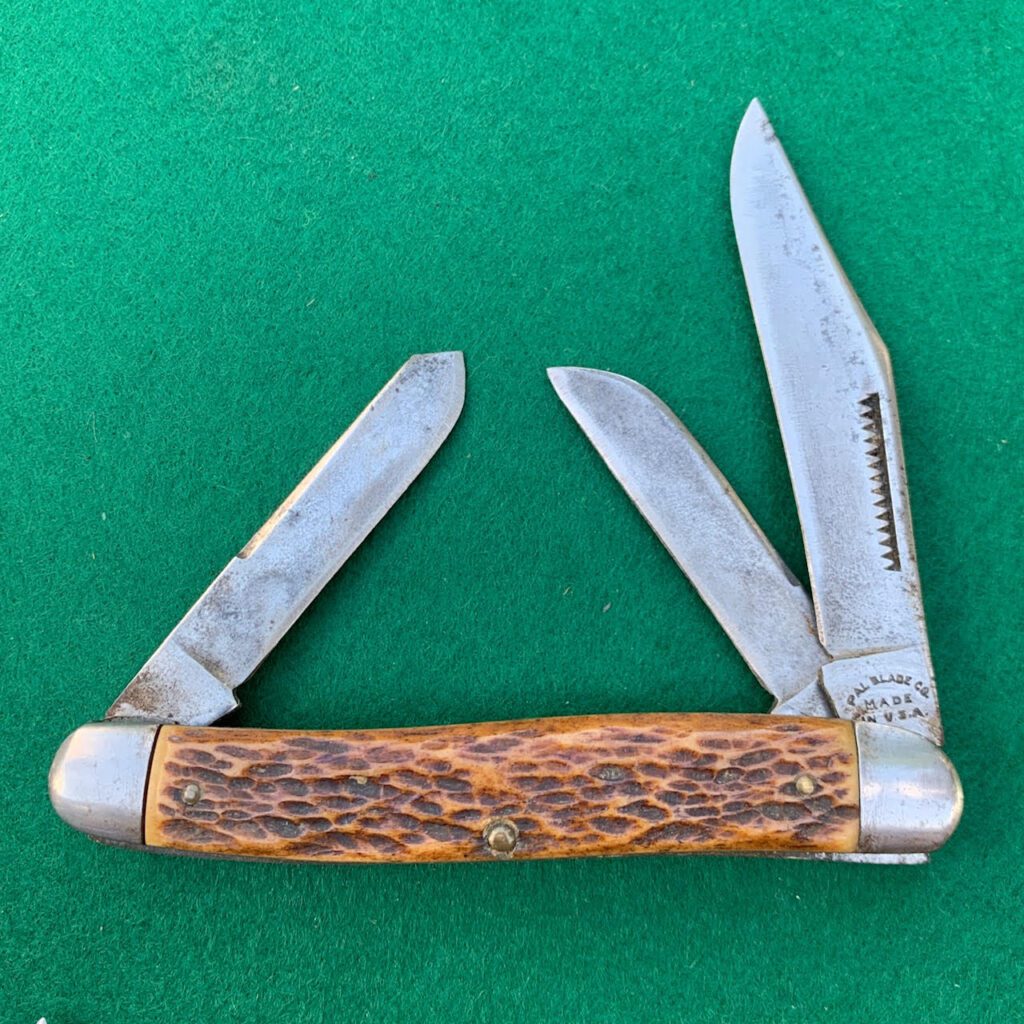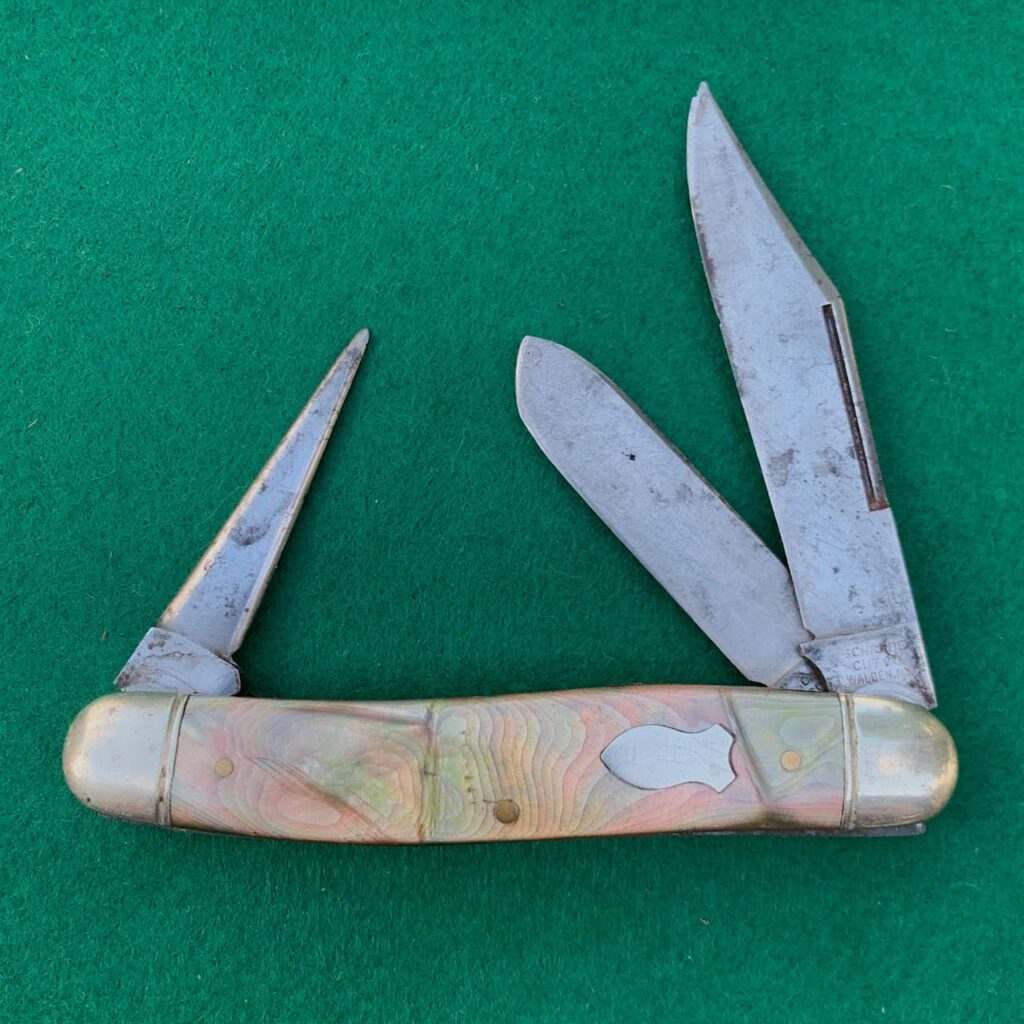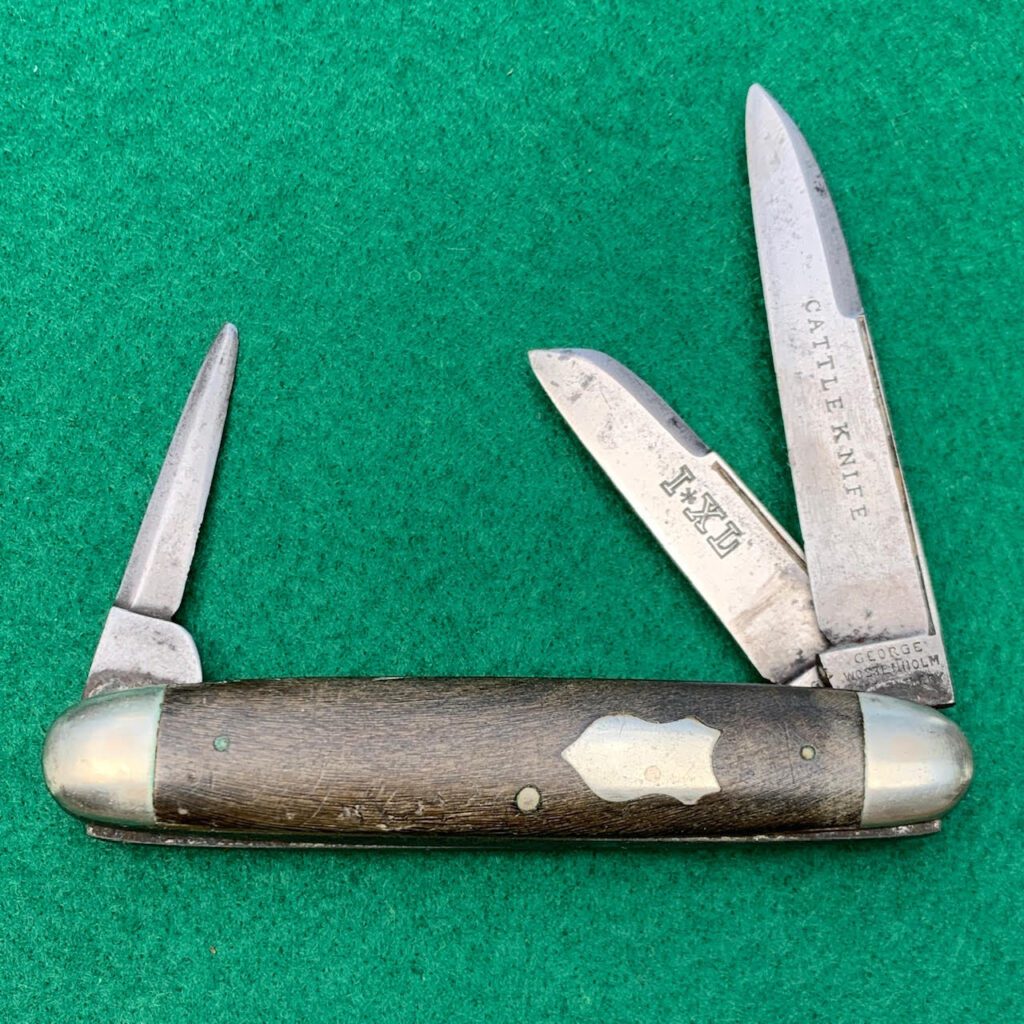There are two pocket knives that are very popular among collectors that look similar at first glance …the stockman (or premium stock) and the cattle knife. The stockman and cattle knife are often confused for each other as they have some similar characteristics and uses.
In this blog entry I wanted to point out the differences between these two patterns so you can easily differentiate between the two.
This article contains affiliate links.
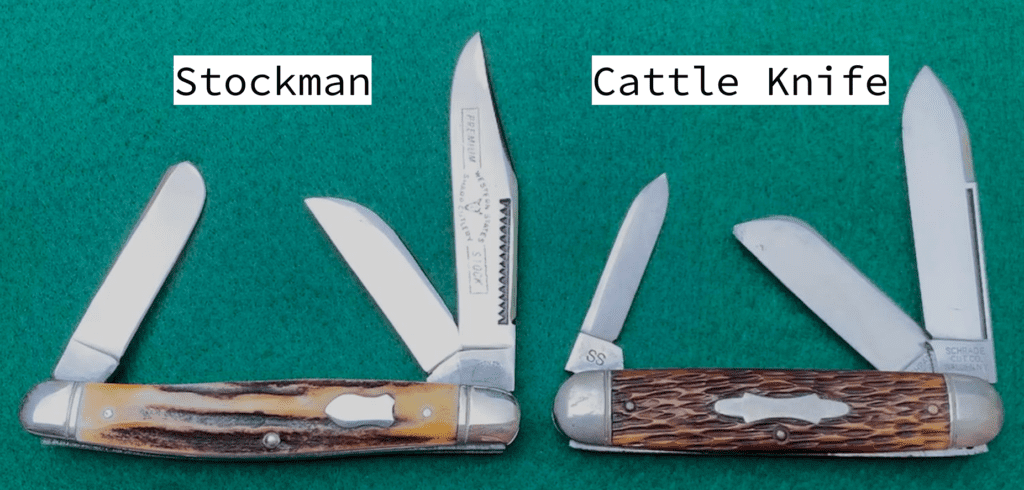
Premium Stock (Stockman)
- Manufacturer: Western States
- Year Made: c.1911-1956
- Handle Material: Genuine Stag
- Blades: Clip (master), sheep foot, spey
- Length Closed: 4″
Cattle Knife
- Manufacturer: Schrade Cut Co
- Year Made: c.1904-1946
- Handle Material: Jigged “peach seed” Bone
- Blades: Spear (master), sheep foot, pen
- Length Closed: 3 5/8″
How are they similar?
Both of these knives were designed to be used on livestock and accomplishing various tasks like cutting, slicing, and general utility work. Both typically have three blades and the blade next to the master is almost always a sheep foot blade. The sheep foot is purposely designed to have a straight cutting edge and a tip that prevents accidentally poking livestock.
How are they different?
So how are these knives different from each other if they have similar uses and a similar blade set up?
The main difference between a stockman and a cattle knife is the shape of the handle. The stockman knife has a serpentine (curved) handle while the cattle knife features an equal end frame.
In addition, although there are always exceptions, stockman knives typically have a master clip blade while cattle knives usually have a master spear (symmetrical) blade. I have seen cattle knives with clip blades but I have never seen a stockman with the spear blade.
Stockman almost always feature a spey blade as the third blade while a pen blade is often found on the cattle knife.
More Information
The cattle knife predates the stockman and seems to have been introduced around the mid to late 19th century.
The stockman is also called a premium stock knife and was introduced as a fancier version of the cattle knife. In the world of modern traditional pocket knives, stockman are still a popular pattern whereas the cattle knife pattern is seldom seen. Case, Old Timer and Boker are some of the makers that still offer stockman knives.
Some Additional Examples
Case XX USA 10 Dot stockman with red bone handles. 1970
Henry Sears & Son Prussia stockman with stag handles. Blade is marked “Queen”. c. 1900
Pal Blade Co stockman with rogers bone handles. c. 1935-1953
Schrade Cut Co stockman with swirl celluloid or pyralin handles. Punch blade present. Notice the spey blade position relative to the others. c.1904-1946
New York Knife Co Walden cattle knife with ebony wood handles. Notice the spear master and the pen blade. c.1880-1900
George Wostenholm I*XL Cutlery cattle knife with buffalo horn handles. Note the “Cattle Knife” stamp on blade and long pulls on spear and sheep foot blade. c.1890-1910.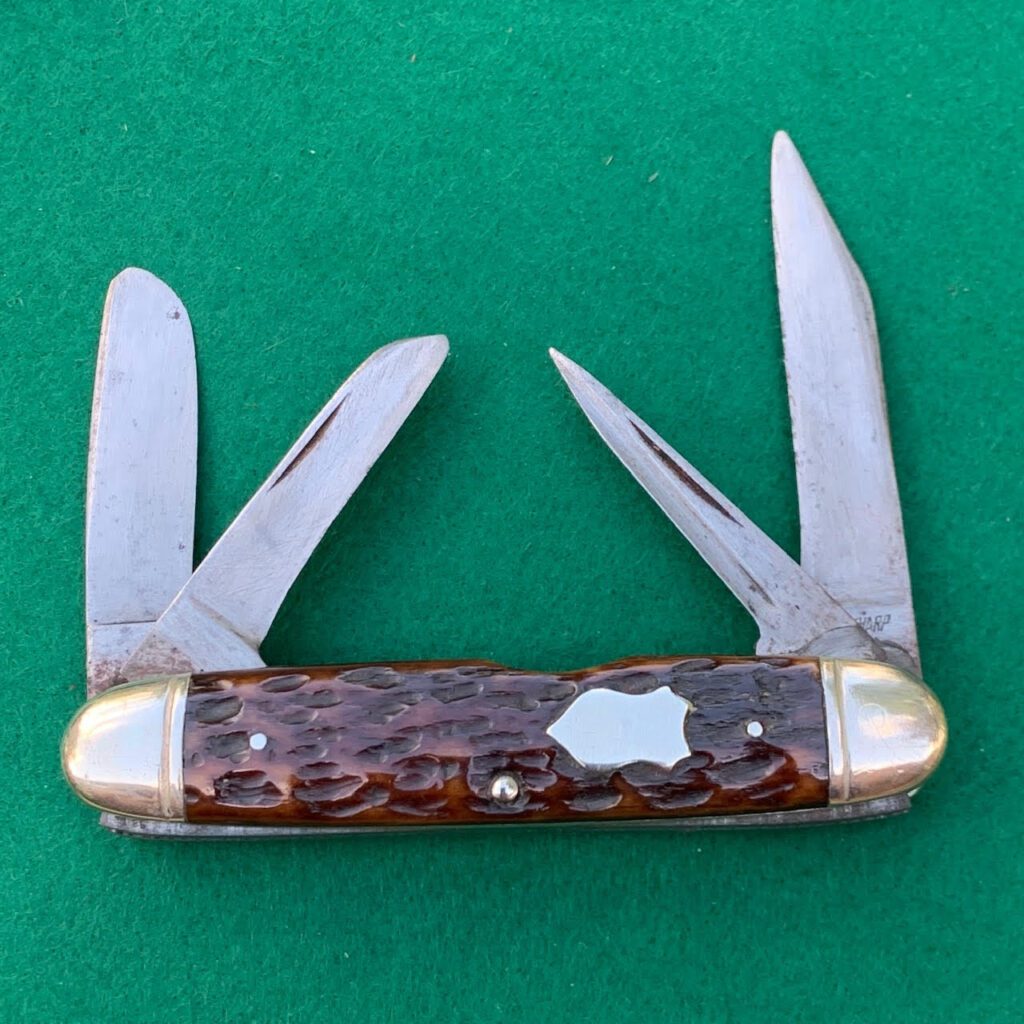
Sta-Sharp USA (made by Camillus) cattle knife with jigged bone handles. Notice this knife has four blades. In addition to the three typical blades present, it also includes a punch blade next to the master. c.1950s.
Shop for vintage CATTLE KNIVES on eBay
In summary, stockman or premium stock knives have a curved handle and are more common than cattle knives. Cattle knives are harder to find and feature an equal end frame. Both knives are favorites among collectors and bring premiums when they are in good condition and have premium handle materials like genuine stag, jigged bone or even pearl! I enjoy collecting these (mostly) three bladed knives and I am always looking to add more. Happy Collecting!

